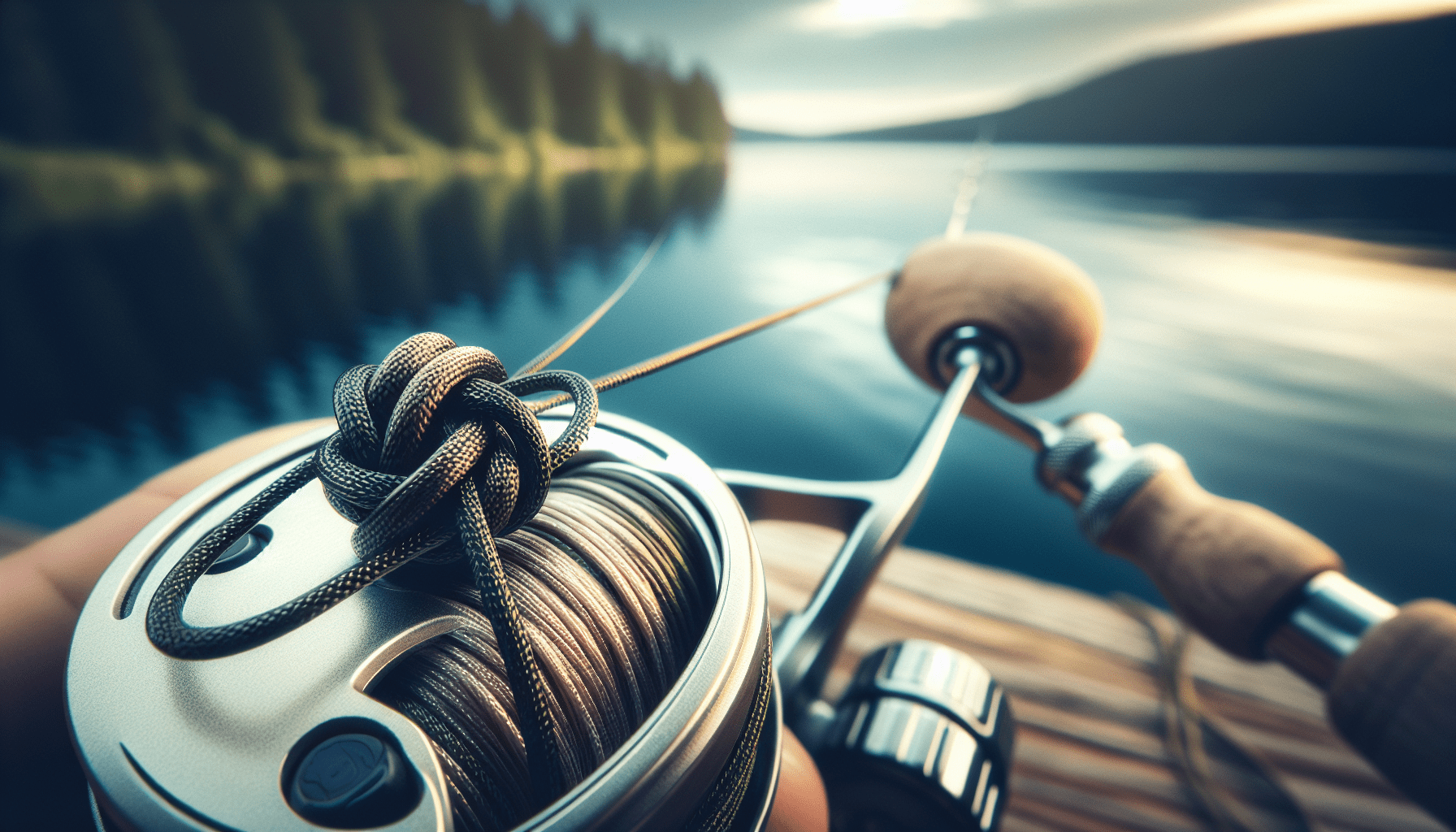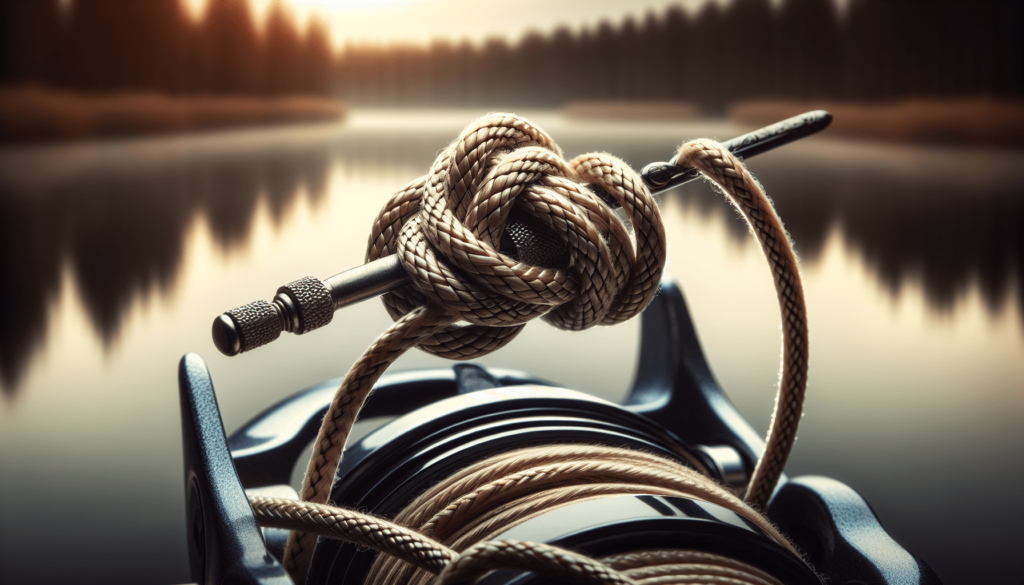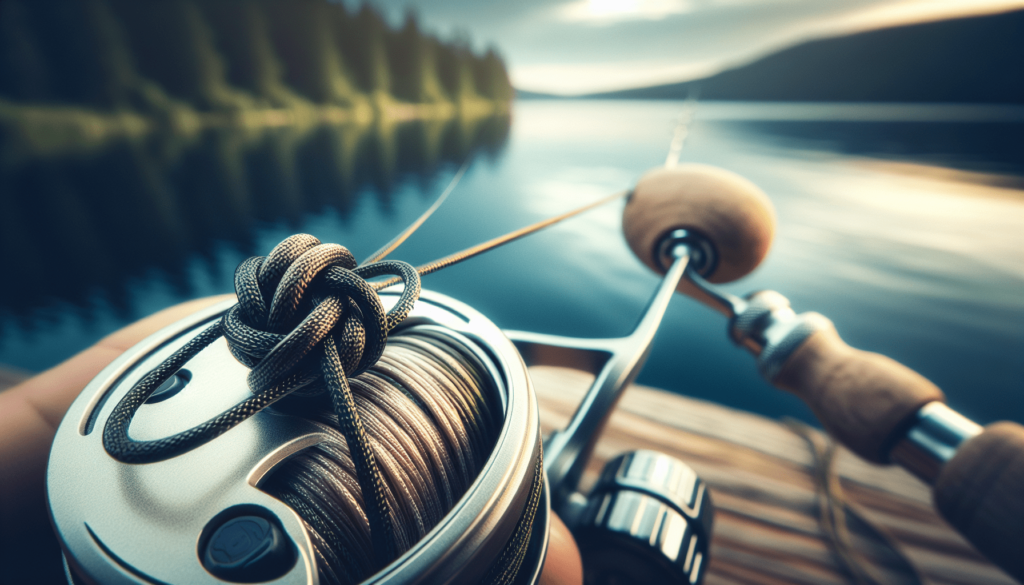
Hey fishing enthusiasts, let’s dive into the essentials of angling with our guide on the “Top 5 Fishing Knots To Master.” When we’re out in the waters, whether chasing after the big catch or enjoying a calm afternoon by the river, these knots are our secret weapons. From securing our hook with a trusty Palomar Knot to ensuring our line stays strong with a Blood Knot, mastering these five essential knots will make all the difference in our fishing adventures. Join us as we explore each knot’s unique benefits and step-by-step instructions, ensuring we’re well-prepared for our next fishing trip! Have you ever felt the frustration of losing a great catch because your knot gave way? We have, and it’s one of those agonizing moments no angler wants to go through. As fellow fishing enthusiasts, we know just how crucial it is to have reliable knots that hold up under pressure. That’s why we’ve put together this comprehensive guide to mastering the top 5 fishing knots every angler should know. These knots are essential for increasing your success on the water, ensuring that your line, hook, and bait work together seamlessly.

1. Improved Clinch Knot
What is it?
The Improved Clinch Knot is one of the most popular and versatile knots used by anglers. It is primarily used to secure the fishing line to the hook, lure, or swivel. This knot is easy to tie and provides excellent strength, making it a favorite among beginners and seasoned fishermen alike.
How to Tie the Improved Clinch Knot
Here’s a step-by-step guide to tying this reliable knot:
- Thread the Line: Pass the end of the fishing line through the eye of the hook, lure, or swivel.
- Wrap Around: Wrap the loose end of the line around the standing part of the line 5-7 times.
- Loop Back: Take the end of the line and thread it through the small loop that forms just above the eye.
- Tighten and Secure: Pull the end of the line through the larger loop that forms and tighten by pulling on the hook and the standing line.
| Step | Description |
|---|---|
| 1 | Thread the end of the fishing line through the eye. |
| 2 | Wrap the loose end around the standing line 5-7 times. |
| 3 | Thread the end through the small loop above the eye. |
| 4 | Pull the end through the larger loop and tighten. |
Why We Like It
The Improved Clinch Knot is strong, easy to tie, and adaptable to various types of fishing lines. Its versatility ensures that it holds up well against different types of fish and fishing conditions.
2. Palomar Knot
What is it?
The Palomar Knot is known for its simplicity and strength. This knot is virtually fail-proof when tied correctly, making it a go-to knot for many fishing professionals. It’s also incredibly quick and easy to tie, which is a huge advantage when you’re out on the water.
How to Tie the Palomar Knot
Follow these simple steps to tie the Palomar Knot:
- Double the Line: Double about 6 inches of your line and pass it through the eye of the hook.
- Overhand Knot: Tie a simple overhand knot with the doubled line, leaving enough room for the hook to pass through.
- Through the Loop: Pass the hook through the loop formed by the overhand knot.
- Tighten the Knot: Moisten the knot and pull on both ends of the line to tighten it against the eye of the hook.
| Step | Description |
|---|---|
| 1 | Double about 6 inches of line and pass through the eye. |
| 2 | Tie a simple overhand knot with the doubled line. |
| 3 | Pass the hook through the loop formed by the knot. |
| 4 | Moisten and pull to tighten. |
Why We Like It
The Palomar Knot is exceptionally strong and maintains close to 100% of the line’s original strength. It’s also suitable for braided lines, which are often more challenging to knot effectively.
3. Loop Knot (Non-Slip Mono Loop)
What is it?
The Loop Knot, specifically the Non-Slip Mono Loop, is ideal for creating a loop that allows the lure or fly to move naturally in the water. This extra movement can make a significant difference in attracting fish.
How to Tie the Loop Knot
Let’s walk through the process of tying this useful knot:
- Create a Loop: Form a small loop at the end of the line by making an overhand knot.
- Through the Eye: Pass the tag end through the eye of the hook, lure, or fly.
- Re-thread the Loop: Thread the tag end back through the loop you created in step one.
- Wrap Around: Wrap the tag end around the standing part of the line about 4-5 times.
- Back Through the Loop: Pass the tag end back through the overhand loop and then out through the larger loop.
- Tighten and Secure: Moisten the line and tighten the knot by pulling on the tag end and the standing line.
| Step | Description |
|---|---|
| 1 | Form an overhand knot creating a small loop. |
| 2 | Pass the tag end through the eye of the hook. |
| 3 | Thread the tag end back through the small loop. |
| 4 | Wrap the tag end around the standing line 4-5 times. |
| 5 | Pass back through the overhand loop and out the larger loop. |
| 6 | Moisten and tighten the knot. |
Why We Like It
The Loop Knot gives your lure or fly additional freedom of movement, enhancing its natural appearance and making it more attractive to fish. It’s particularly useful when fly fishing or using crankbaits.
4. Blood Knot
What is it?
The Blood Knot is primarily used for joining two lines together, such as when you need to extend your line or create a leader. It’s an essential knot for any angler who wants to ensure a strong and seamless connection between lines.
How to Tie the Blood Knot
Here are the steps to successfully tie a Blood Knot:
- Lay Lines Parallel: Overlap the ends of the two lines you wish to join.
- Wrap and Twist: Wrap one line around the other about five times and bring the tag end back between the loops.
- Repeat on the Other Side: Wrap the other line around the first one about five times and bring its tag end back between the loops.
- Tighten the Knot: Wet the knot with a bit of water or saliva and pull on both standing lines to tighten.
| Step | Description |
|---|---|
| 1 | Overlap the ends of the two lines. |
| 2 | Wrap one line around the other five times and bring the tag end through. |
| 3 | Repeat the wraps with the other line. |
| 4 | Wet the knot and tighten by pulling both lines. |
Why We Like It
The Blood Knot is excellent for maintaining the strength and flexibility of your fishing line when you need to join two lines. It’s particularly useful for fly fishing and saltwater fishing where line distance is crucial.

5. Double Surgeon’s Knot
What is it?
The Double Surgeon’s Knot is another reliable knot for joining two lines together. It is simpler and quicker to tie compared to the Blood Knot, though it might be slightly bulkier.
How to Tie the Double Surgeon’s Knot
Follow these steps to tie the Double Surgeon’s Knot:
- Overlap Lines: Place the two lines parallel to each other, overlapping about 6 inches.
- First Loop: Form a loop with both lines and pass the ends through the loop once.
- Second Loop: Repeat by passing the ends through the loop a second time.
- Tighten the Knot: Moisten the lines and pull all four ends to tighten the knot.
| Step | Description |
|---|---|
| 1 | Overlap the two lines by about 6 inches. |
| 2 | Form a loop with the lines and pass the ends through once. |
| 3 | Pass the ends through the loop again. |
| 4 | Moisten and pull all ends to tighten. |
Why We Like It
The Double Surgeon’s Knot is fast and straightforward to tie, making it perfect for quick line-to-line connections. It’s especially useful when you’re in a hurry to get back to fishing.
Practice Makes Perfect
Knowing these knots is just the first step. It’s essential to practice them until you can tie them confidently and quickly. Keep some rope or fishing line handy and spend a few minutes each day working on these knots. The more you practice, the more proficient you’ll become.
When and Why to Use Each Knot
Understanding when to use each of these knots is crucial. Different fishing situations call for different knots, and knowing which one to use can significantly impact your fishing success.
| Knot Name | Best Used For |
|---|---|
| Improved Clinch Knot | Securing line to hook, lure, or swivel |
| Palomar Knot | High-strength connections, braided lines |
| Loop Knot (Non-Slip Mono) | Adding natural movement to lures or flies |
| Blood Knot | Joining two lines, creating leaders |
| Double Surgeon’s Knot | Quick and easy line-to-line connections, especially in a hurry |
Improved Clinch Knot:
Use this knot when you need a reliable and easy connection to your hook, lure, or swivel. Its versatility makes it suitable for most fishing scenarios.
Palomar Knot:
Opt for the Palomar Knot when you need a strong connection that doesn’t compromise the integrity of your line, especially when using braided lines.
Loop Knot (Non-Slip Mono Loop):
This knot shines when using lures or flies that benefit from extra movement. It’s ideal for creating a more enticing presentation to attract fish.
Blood Knot:
Utilize the Blood Knot for a strong and seamless connection between two lines, particularly in fly fishing or situations requiring line extensions.
Double Surgeon’s Knot:
Choose the Double Surgeon’s Knot when time is of the essence, and you need a quick and effective way to join two lines.
Mastering the Knots
Mastery of these knots doesn’t just happen overnight. Here are some tips to help you become proficient:
- Use Visual Resources: There are numerous videos and diagrams online that can provide visual guidance to augment our step-by-step instructions.
- Practice in Different Conditions: Try tying these knots in various settings, such as in low light or with cold hands, to simulate real fishing conditions.
- Test Your Knots: After tying a knot, give it a strong pull to ensure it’s secure. This will help you develop confidence in your knot-tying skills.
Final Thoughts
Every angler needs a reliable set of knots in their fishing arsenal. The Improved Clinch Knot, Palomar Knot, Loop Knot, Blood Knot, and Double Surgeon’s Knot cover a wide range of fishing scenarios, ensuring you’re prepared for whatever you encounter on the water.
By mastering these knots, not only will you increase your chances of landing that big catch, but you’ll also enjoy a more successful and satisfying fishing experience overall. So, grab some practice line and start tying – the fish are waiting!





